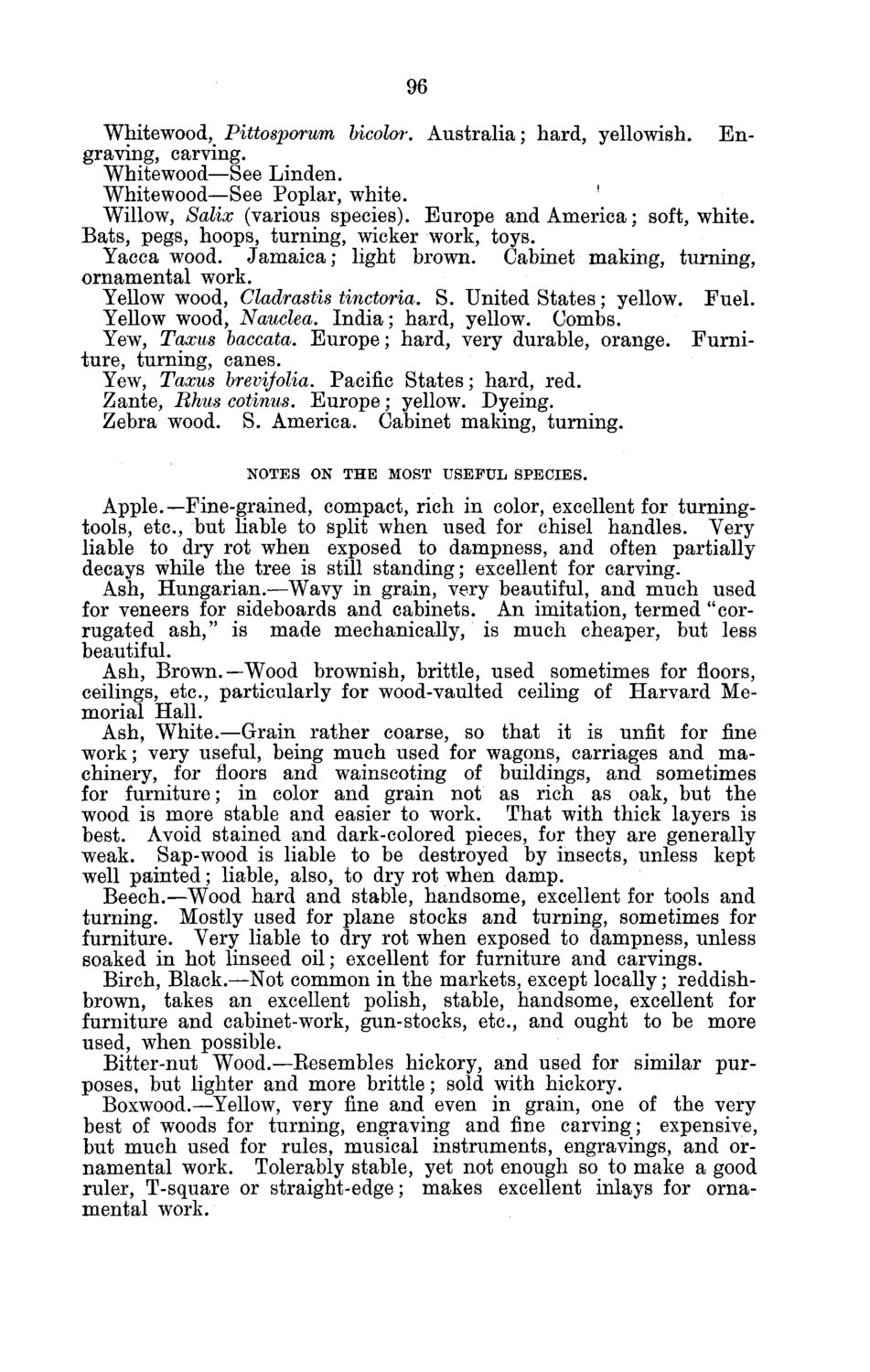| |
| |
Caption: Board of Trustees Minutes - 1880
This is a reduced-resolution page image for fast online browsing.

EXTRACTED TEXT FROM PAGE:
96 Whitewood, Pittosporum bicolor. Australia; hard, yellowish. Engraving, carving. Whitewood—See Linden. Whitewood—See Poplar, white. ' Willow, Salix (various species). Europe and America; soft, white. Bats, pegs, hoops, turning, wicker work, toys. Yacca wood. Jamaica; light brown. Cabinet making, turning, ornamental work. Yellow wood, Cladrastis tinctoria. S. United States; yellow. Fuel. Yellow wood, Nauclea. India; hard, yellow. Combs. Yew, Taxus baccata. Europe; hard, very durable, orange. Furniture, turning, canes. Yew, Taxus brevifolia. Pacific States; hard, red. Zante, Rhus cotinus. Europe; yellow. Dyeing. Zebra wood. S. America. Cabinet making, turning. NOTES ON THE MOST USEFUL SPECIES. Apple.—Fine-grained, compact, rich in color, excellent for turningtools, etc., but liable to split when used for chisel handles. Very liable to dry rot when exposed to dampness, and often partially decays while the tree is still standing; excellent for carving. Ash, Hungarian.—Wavy in grain, very beautiful, and much used for veneers for sideboards and cabinets. An imitation, termed "corrugated ash," is made mechanically, is much cheaper, but less beautiful. Ash, Brown.—Wood brownish, brittle, used sometimes for floors, ceilings, etc., particularly for wood-vaulted ceiling of Harvard Memorial Hall. Ash, White.—Grain rather coarse, so that it is unfit for fine work; very useful, being much used for wagons, carriages and machinery, for floors and wainscoting of buildings, and sometimes for furniture; in color and grain not as rich as oak, but the wood is more stable and easier to work. That with thick layers is best. Avoid stained and dark-colored pieces, for they are generally weak. Sap-wood is liable to be destroyed by insects, unless kept well painted; liable, also, to dry rot when damp. Beech.—Wood hard and stable, handsome, excellent for tools and turning. Mostly used for plane stocks and turning, sometimes for furniture. Very liable to dry rot when exposed to dampness, unless soaked in hot linseed oil; excellent for furniture and carvings. Birch, Black.—Not common in the markets, except locally; reddishbrown, takes an excellent polish, stable, handsome, excellent for furniture and cabinet-work, gun-stocks, etc., and ought to be more used, when possible. Bitter-nut Wood.—Besembles hickory, and used for similar purposes, but lighter and more brittle; sold with hickory. Boxwood.—Yellow, very fine and even in grain, one of the very best of woods for turning, engraving and fine carving; expensive, but much used for rules, musical instruments, engravings, and ornamental work. Tolerably stable, yet not enough so to make a good ruler, T-square or straight-edge; makes excellent inlays for ornamental work.
| |